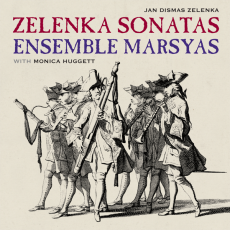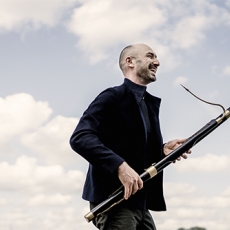Ensemble Marsyas - Zelenka Sonatas - Double Reed News
Peter Whelan is due to release no fewer than four solo recordings within the coming months, including the Weber concerto with the Scottish Chamber Orchestra (Linn Records), the Mozart concerto with the Arcangelo Orchestra, his fourth Vivaldi concerto with La Serenissima (Avie), and the debut disc of his ensemble Marsyas with three of the Zelenka trio sonatas (Linn) - all on different instruments and at different pitches.
I asked him if this recording marathon was a deliberate undertaking. 'It was more a case of waiting for a bus and then several arriving at once' he replied. Nonetheless this must have been a mammoth undertaking.
Peter has been principal bassoonist with the Scottish Chamber Orchestra for the past three years, taking over from Ursula Leveaux, who held the position for twenty.
'SCO has always been my dream job. I love the chamber orchestra repertoire, which is particularly rewarding for a bassoonist, and I love the way in which the orchestra plays - clean lines, gritty energy and with a single purpose. I feel honoured to take over the mantel from Ursula who has made an indelible mark on the orchestra with her lyrical playing and dedication and I count my blessings to have found the best colleague imaginable in (2nd bassoonist) Alison Green - a match made in heaven!'.
One of the unique aspects of the SCO is the occasional use of the directors instead of conductors and the Weber recording was directed from the violin by Alexander Janacek. 'This was a risk as the concerto requires a large orchestra and is on the cusp of requiring a conductor, but it paid off in terms of spontaneity and the chamber music that we managed to find during the sessions. To pull this off you need to have a lot of trust in your colleagues and they need to have patience with you!'.
For the Weber, Peter played his 15,000-series Heckel, but for the Vivaldi he used a 4-keyed instrument by Dutch maker, Peter de Koningh. There has been a recent surge in interest in Vivaldi's bassoon concerti, championed by Peter's former teacher Sergio Azzolini. 'Studying in Basel with Sergio was an eye-opening experience when it came to Vivaldi. This music can look deceptively simple on the page, but there is an infinite wealth of musical possibilities if you are prepared to dig a little beneath the surface.'
These concerti (and especially the RV 477 on the disc) are spectacularly demanding technically, but playing on the baroque bassoon proved less of a hindrance than one might imagine. 'With fewer keys to get in the way, the technical passages felt easier, and also you are able to play to the very limits of the instrument so there is no feeling of having to hold back. The sultry sound-world of the early bassoon proved a joy in the more expressive movements - something that I now miss when playing on the modern instrument.
The elephant lurking in the closet of every double-reed player is the superhuman challenge presented by the eighteenth-century Bohemian composer Jan Dismas Zelenka, who wrote arguably the greatest masterpieces for oboe and bassoon,. Extremely virtuosic, harmonically eccentric on a massive scale, his six sonatas for two oboes, bassoon and continuo demand much from player and listener alike; a daunting challenge stretching across centuries that can, according to Whelan, reap rich rewards.
'This is music that I get really excited by; despite being composed in the eighteenth century, it still feels experimental, sometimes wildly so. It is an amazing mixture of international styles, from Bohemian folk dance to Italian concerto and German church style, with splashes of Turkish colour thrown in to boot. There is something in these works that captures the imagination and that stamps and screams to be heard with its unsettling extremes. Each movement plunges the listener into a completely different sound-world from sumptuous chromaticism to extreme virtuosity.
There have been several recordings made of the Zelenka sonatas, most notably the version made by Holliger, Bourg and Thunemann; so I asked what sets this new recording apart from the others. 'When researching the manuscripts we noticed that Zelenka was quite specific about the continuo instruments to be used, mentioning theorbo (a bass lute with an enormous neck) and violone (a viol halfway between cello and double bass in size). Ours will be the first recording to use this combination for these sonatas. These instruments, combined with the baroque oboes and bassoon, give the music a fizz and life that is not possible to achieve on modern instruments. The virtuosic passages sound even more extreme, the gypsy dance moments sound more folksy and the chromatic passages sound more 'blue' on these instruments. We are really excited by the results'.
For the Mozart concerto Peter uses an 8-key copy of a Gresner bassoon, the model probably used by Mozart's bassoonists. What are the challenges of changing between different instruments? 'It can be a bit of a faff carrying lots of instruments around but as long as you arrange space between the various different projects it can work well. Having to rehearse or play concerts on different instruments on the same day can be challenging, especially when it comes to having to find more than one type of reed to work well! All in all I find that the variety makes my professional life more interesting and helps me to understand where the modern instrument has come from, which can be very helpful when forming an interpretation.'


